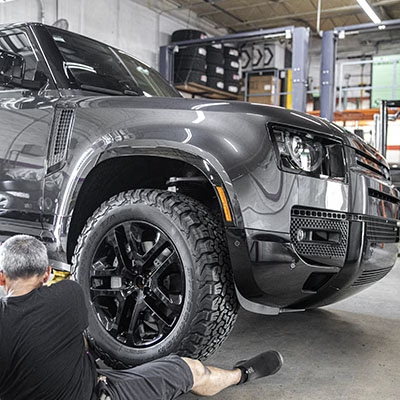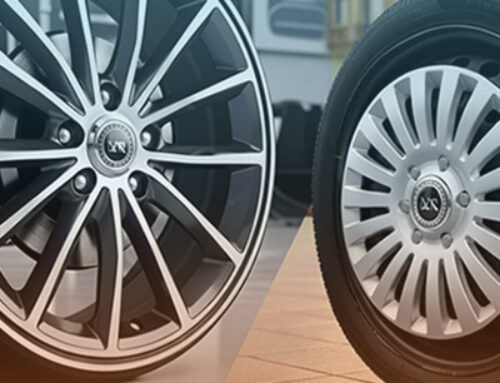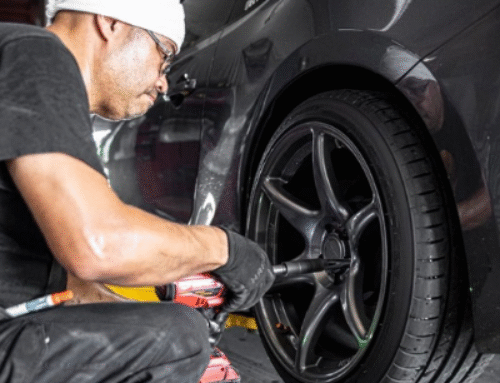Signs Your Wheels Are Unbalanced and How to Fix Them
Why Wheel Balance Matters More Than You Think
If you’ve ever experienced unexpected vibrations while driving—especially at higher speeds—your vehicle might be showing signs of unbalanced wheels. Though it may seem like a minor issue, wheel imbalance can lead to serious consequences if left unaddressed, affecting everything from tire wear to suspension performance and overall driving safety.
In this article, we’ll explain what causes wheel imbalance, how to identify the warning signs, the risks of ignoring them, and how to resolve the issue properly. Whether you’re a car enthusiast or simply want to ensure your vehicle runs smoothly, this guide is for you.
What Is Wheel Imbalance and How Does It Happen?
Wheel imbalance occurs when the mass of a wheel and tire is not evenly distributed around the axle. This results in uneven rotation, which can cause vibrations and other performance issues.
Common causes of wheel imbalance include:
-
Impacts with potholes or curbs
-
Uneven tire wear over time
-
Improper tire installation
-
Accumulated dirt, mud, or debris on wheels
Note: Wheel imbalance is not the same as wheel misalignment. Imbalance affects the rotation of the wheel, while misalignment refers to the positioning of wheels relative to each other and the road.
Main Signs of Unbalanced Wheels
Recognizing the signs of unbalanced wheels early can prevent further damage and ensure a smoother, safer drive. Here are the most common symptoms:
Steering wheel vibrations
Noticeable especially at higher speeds, this is often the first sign of imbalance.
Uneven tire wear
Tires may show irregular tread patterns, shortening their lifespan.
Increased fuel consumption
Your vehicle may require more energy to maintain speed, leading to reduced fuel efficiency.
Unusual noises while driving
Wobbling, humming, or thumping sounds may occur, particularly when braking or turning.
Driving discomfort and fatigue
Constant vibration can make driving tiring, especially on longer trips.
What Damage Can Unbalanced Wheels Cause?
Ignoring the signs of unbalanced wheels can result in:
-
Accelerated wear of suspension and steering components
-
Strain on wheel bearings
-
Decreased driving comfort
-
Higher maintenance and repair costs
How to Fix Unbalanced Wheels
Fortunately, addressing this issue is straightforward with the right tools and expertise.
Wheel balancing process:
-
A technician uses a dynamic balancing machine to identify weight distribution issues.
-
Counterweights are applied to the wheel to correct the imbalance.
-
The result: improved vehicle stability and smoother handling.
How long does it take?
Typically 15 to 30 minutes per wheel.
Is it expensive?
Not at all. It’s one of the most affordable maintenance services with significant long-term benefits.
How Often Should You Balance Your Wheels?
-
Every 10,000 km (6,000 miles) or with each tire rotation
-
After a major impact with a curb or pothole
-
When installing new tires
-
Whenever signs of unbalanced wheels are observed
FAQs: Your Questions Answered
✅ Can wheel imbalance affect alignment?
➡️ Not directly, but both issues can compromise driving performance and safety.
✅ Is it safe to keep driving if I feel vibrations?
➡️ No. It’s best to have the issue inspected immediately to avoid further damage.
✅ Do all four wheels need to be balanced?
➡️ Ideally, yes. However, in some cases only the affected wheels may require balancing.
✅ Can I balance wheels at home?
➡️ Not accurately. Professional equipment is needed for precise and effective results.
✅ How much does wheel balancing cost?
➡️ It varies, but usually ranges from $15 to $50 per wheel depending on location and vehicle type.
Keep Your Ride Safe and Smooth
Maintaining proper wheel balance is essential for the safety, comfort, and efficiency of your vehicle. Being able to identify the signs of unbalanced wheels early can help you prevent costly repairs and enjoy a more stable driving experience.
If you’re experiencing any of these symptoms, don’t wait. Schedule a wheel balancing service with a trusted technician and restore the smooth performance your car was designed for.
Want to dive deeper into how wheel balancing actually works? Check out our detailed article: The Science Behind Wheel Balancing: Why It’s Crucial for a Smooth Ride. It breaks down the process and explains why it’s a key part of your car’s performance and safety.






